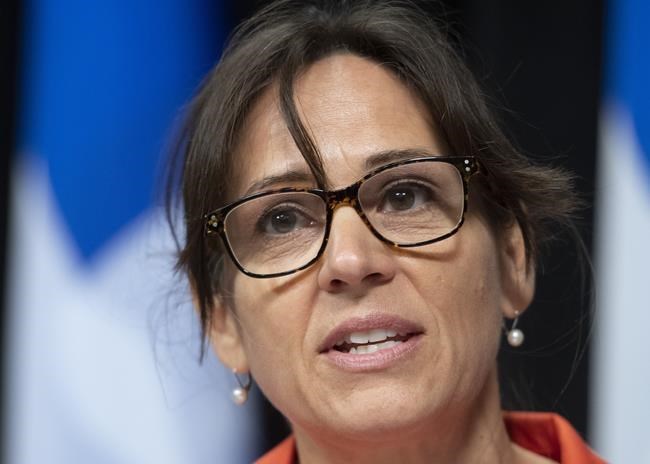MONTREAL — The Quebec government is promising $12 million in funding for the Quebec Major Junior Hockey League during the COVID-19 pandemic, while another province with teams in the organization says it is not prepared to make a similar move.
The money from Quebec — part of a $70 million package for sports and leisure federations — will be divided among the 12 QMJHL teams in the province with each team getting $1 million.
But Nova Scotia Premier Stephen McNeil said Thursday his province will not be providing financial assistance for the Halifax Mooseheads and Cape Breton Eagles — who make up one-third of the Maritimes Division in the 18-team league.
Quebec's move came Thursday, one day after the league suspended play in both of its Quebec divisions until at least Oct. 28. Six of the league's 12 Quebec-based teams are in red zones, where organized sport is currently prohibited.
The league is continuing play in its Maritimes Division, with five of six teams. The Moncton Wildcats will not play for now because of New Brunswick government restrictions in the area.
Isabelle Charest, Quebec's junior education minister, says the league helps drive economic development in several regions of the province.
The money is intended to “assure the survival of this league, which is a league that is very important in Quebec, in a sport that is very important in Quebec,” said Charest.
McNeil answered with a flat "no" when asked whether the Nova Scotia government would be extending any financial aid to the Mooseheads or Eagles.
"Of all of the challenges facing our province, I don't believe the number one priority on the minds of Nova Scotians is for us to be investing in Q-League hockey," McNeil said following a cabinet meeting.
"Neither one of them have asked us for the kind of money that is being talked about coming out of Quebec."
McNeil said provincial health officials would continue to work with the clubs concerning public health protocols in attracting a limited number of fans to their arenas.
The QMJHL, which opened its season Oct. 2, has all games being played exclusively within the boundaries of each division.
The league had outbreaks on two teams last week.
The Blainville-Boisbriand Armada announced they had 18 positive tests, while the Sherbrooke Phoenix said they had eight after the two teams played each other twice on the first weekend of the season. Both teams suspended all activities and went into isolation after the positive tests.
Early last week, the Quebec government announced the Montreal and Quebec areas were being classified as COVID red zones, preventing the Armada and Quebec Remparts from playing games.
The positive tests and the hot-zone announcement led to the postponements of 10 games.
Since then, more red zones have been announced, affecting play for other teams.
The QMJHL is the only one of Canada's three major junior hockey leagues that has started play this season.
The Western Hockey League announced Wednesday it hopes to start play Jan. 8, 2021 with teams also playing only within their own divisions.
The Ontario Hockey League said last month it hopes to start on Dec. 1, but has not released specific plans.
A potential issue for the OHL emerged last week when Lisa MacLeod, Ontario’s minister of Heritage, Sport, Tourism and Culture Industries, said that "body contact, unless it’s incremental, will not be permitted as a result of COVID-19."
MacLeod added that the OHL has not asked for any financial support from the provincial government during the prolonged stoppage in play.
— With files from Jacob Serebrin in Montreal and Keith Doucette in Halifax.
This report by The Canadian Press was first published Oct. 15, 2020.
The Canadian Press



